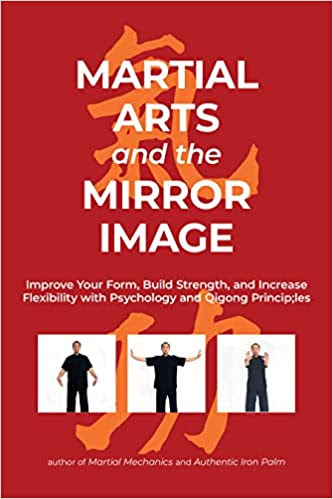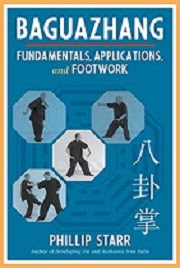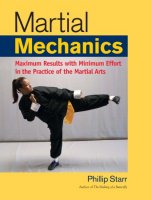by Phillip Starr
This article is
for those of you who want to improve your own or your student's
sparring skills. If you watch sparring in many (perhaps most)
martial arts schools (especially in the West) or tournaments, what
you'll witness is a poorly executed version of kickboxing, slipshod
muay thai, or just a vigorous schoolyard slugfest. Technique and
tactics have gone out the window and there is no relationship between
what's going on (sparring) and the forms taught in the system. Most aspects of
our arts are taught progressively, starting at a very basic level and
moving gradually towards more advanced levels. However, in most
martial arts schools nowadays, this isn't the case with sparring. In
some cases, students are introduced to sparring within the first
couple of weeks after starting class! It's absurd and only leads to
the development of bad habits or discouragement.
Basic formal fight
routines prepare students for sparring. It's imperative that they
learn to begin these exercise(s) at the proper distance; that is, the
attacker should be able to touch the receiver with his technique in a
single step. If they begin too close or too far away, the whole
routine is pointless.
Once they become
comfortable with the exercises, it's critical that the attacker tries
to touch them with his attacking technique. And it's important that
the attacker has the INTENTION to strike his partner with great
force. He won't actually DO it, of course, but the intention must be
there!
Students should
begin by practicing 3-step fight routines, which teach them basic
applications of the fundamental techniques and, to a lesser degree,
how to step forward and backward correctly.
3-Step routines,
which quickly become very boring, teach more than just how to use the
basic techniques. They:
teach the student
proper use of distance. If, by the 2nd
or 3rd
attack the students find themselves too close or too far from each
other, the receiver's distancing is flawed and he must learn to
correct it.
1-Step routines
are introduced only after students have acquired considerable skill
in basic 3-step. There are no short-cuts. I remember practicing
3-step for at least 6 months before being permitted to attempt
1-step, which teaches:
After students
become skilled at 1-step, freestyle 1-step may be introduced. This
training exercise is invaluable and hones everything to very fine
edge. I made my advanced students practice it in almost every class.
There are several ways of doing it:
Attack is
specified. Defense also specified.
Attack specified.
Defense free.
Attack
unspecified. Defense specified.
Attack
unspecified. Defense free.
It must be
practiced just so:
One participant
serves as Attacker and the other is the Receiver.
They begin at a
distance of 6-8 ft. apart and bow as if they are sparring. Then
they adopt fighting stances.
They are free to
move around as if they were sparring.
The Receiver will
not strike at the Attacker until the Attacker attacks.
An attack is any
penetration of the Receiver's “defense perimeter.” This
includes penetration by technique, or a (usually inadvertent)
movement of the Attacker that causes him the penetrate the defense
perimeter of the Receiver in any way (even if he doesn't fire an
attacking technique).
Therefore, both
participants must be acutely sensitive to distance (their defense
perimeters) at all times.
The Attacker will
do his best to score on the Receiver with a single, appropriate
technique in perfect form and power, as well as stability. Then he
freezes in place.
The Receiver will
defend himself with an appropriate single technique, delivering it
in perfect form and with adequate power, timing, and stability.
Then he freezes in place so the teacher can check his form, balance,
stance, etc.
If the Attacker
makes an attack and the receiver fails to immediately deliver a
counter-attack, it is counted as a miss.
If either
participants executes a technique that lacks adequate power,
control, stance, stability, timing, or if the distance is to close
or too far, or is something other than a valid martial arts
technique, it is counted as a miss.
So the attack
must be sudden and without a “telegraph” and the counter-attack
must be letter perfect as well. Both participants must strive to do
their absolute best and use textbook-perfect technique. This
develops razor-sharp reflexes, timing, and stresses perfect
technique. I liken the difference between this and the way most
students spar nowadays to the difference between playing “slop
pool” and “calling your shots.” A player of billiards who can
call his shots with success will always beat one who plays “slop
pool” (just shooting the ball out there and hoping it hits
something).

And I maintain
that acquiring skill in freestyle 1-step is considerably more
difficult than sparring. There is no bouncing away and out of range
when the attack comes; you must deal with it immediately and
effectively. Hopping up and bopping your opponent on the head with a
floppy backfist won't cut it, either. Your response must be as
perfect as possible. Freestyle 1-step is the bridge between your
forms and sparring. Don't ignore it.






























.jpg)

.jpg)
.jpg)





.jpg)

.jpg)

















